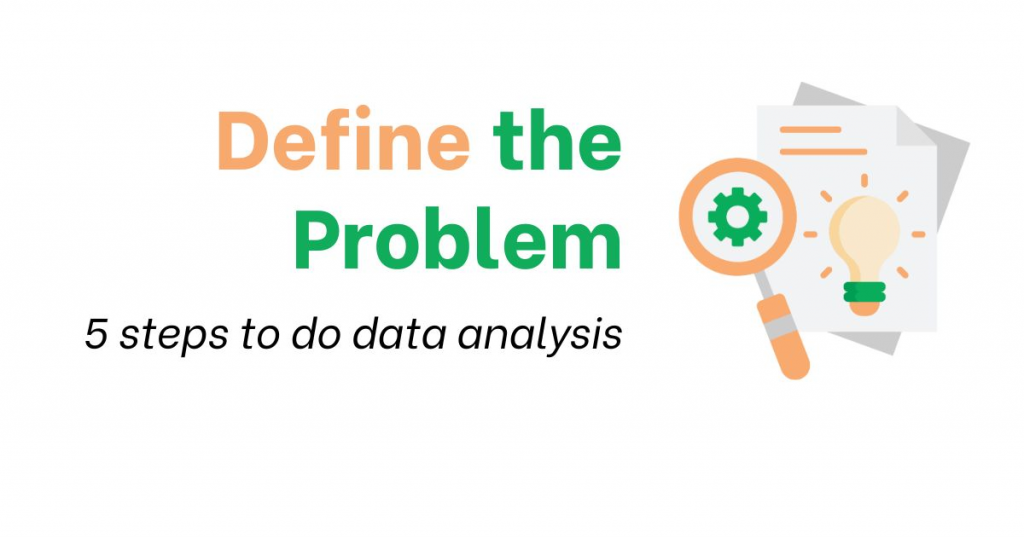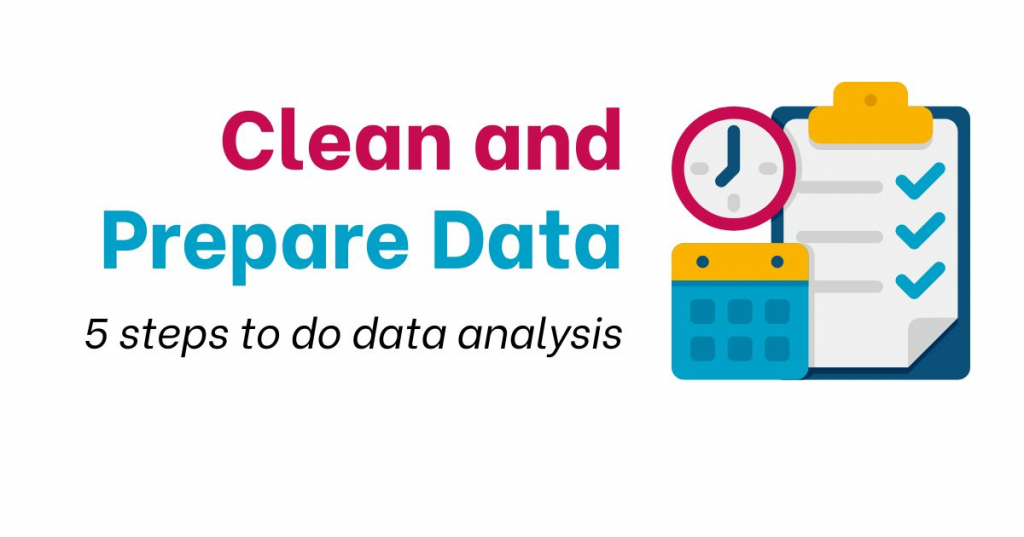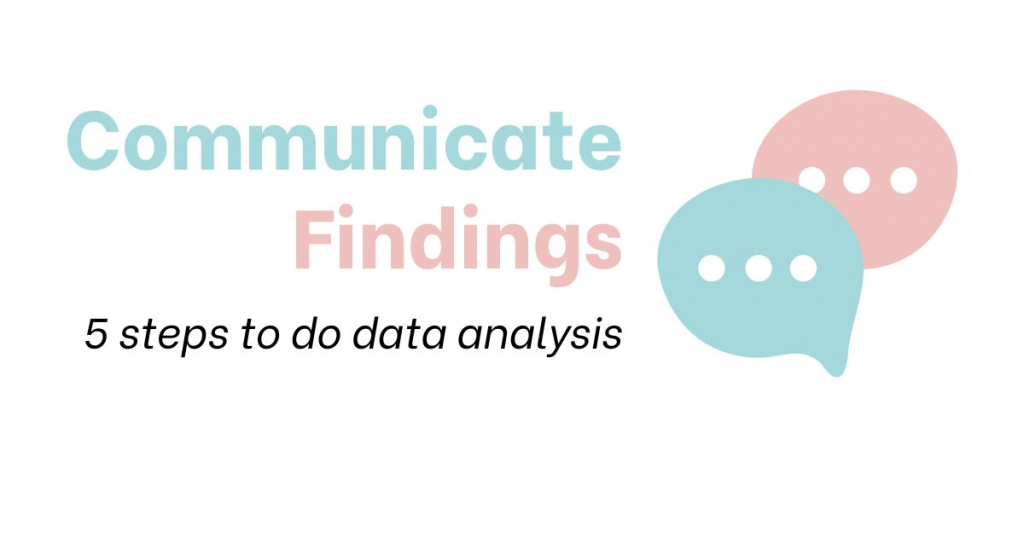Data Analysis for Beginners: How to do it?
Data analysis is a process that includes specific steps to achieve effectiveness. In those steps, depending on the specific industry or need to use data, we can break it down into other steps.
In this article, SkinTrans will guide you through 5 steps to do data analysis. Answering the question "how to do data analysis" will give you a more specific view of this industry.
Define the Problem: The Why Before the How

Many people have a tendency to jump straight into data analysis, eager to crunch numbers and unearth insights. But before you get lost in spreadsheets and charts, take a critical first step: define the problem you're trying to solve.
This might seem obvious, but a clear understanding of your goals is the foundation for an effective and efficient analysis.
Here's why defining the problem is crucial:
Focus: Data can be overwhelming. By clearly defining your goals, you create a lens to focus your analysis. You'll know what information is relevant and what can be safely ignored. Imagine searching a massive library for a specific book. Without knowing the title or author, you'd waste time browsing every shelf. Defining your problem is like having a title in hand, allowing you to locate the relevant information quickly.
Efficiency: A well-defined problem helps you choose the right analytical tools and techniques. You won't waste time exploring dead ends or get bogged down in irrelevant details. It's like using the correct tool for the job. You wouldn't use a screwdriver to hammer a nail.
Actionable Insights: Ultimately, data analysis is about gaining insights that can be used to make decisions. By defining the problem upfront, you ensure that your analysis yields results that are directly relevant to your goals. You'll be able to answer the questions that truly matter and use those answers to take action.
By defining the problem, you move from a broad search for "something wrong" to a targeted investigation. This focused approach will lead to more actionable insights that can be used to address the sales decline.
Collect Data: Find the Answers
So, you've meticulously defined your research question and honed in on what information you need.
Now comes the exciting phase: gathering the data that will unlock those answers.
Here's a closer look at some common data troves you might explore:
Internal Databases: Many organizations have a wealth of information stored electronically. Sales figures, customer demographics, website traffic data - these internal databases can be a goldmine if your question pertains to the organization itself.
Customer Surveys: Want to get straight from the horse's mouth? Craft targeted surveys to gather insights directly from your customers. This is a fantastic way to gauge satisfaction, understand needs, and test new ideas.
Social Media Platforms: Social media is a treasure trove of public opinion. By tracking conversations, hashtags, and mentions, you can gain valuable insights into brand perception, industry trends, and customer sentiment. There are even tools available to help you collect and analyze social media data.
Public Datasets: A surprising amount of valuable data is freely available online from government agencies, research institutions, and non-profit organizations. Public datasets can provide demographic information, economic indicators, and industry statistics - all relevant depending on your research question.
While the amount of data available can be overwhelming, remember: quality is key. Here are some things to consider to ensure your data is up to the task:
Relevance: Does the data directly address your research question? Don't get sidetracked by interesting but irrelevant information.
Accuracy: Is the data reliable and free from errors? Double-check sources and be mindful of potential biases.
Completeness: Does the data provide a comprehensive picture, or are there significant gaps that could skew your results?
By carefully selecting your data sources and ensuring their quality, you'll be well on your way to unearthing the insights you need to answer your research question and achieve your project goals.
Clean and Prepare Data

The importance of data cleaning can't be overstated. Data analysis depends on clean and usable data. Raw data, however, often arrives messy, riddled with errors, inconsistencies, and missing pieces.
Data cleaning is a multi-step process that tackles various data quality issues. Here are some of the common tasks involved:
Identifying and removing errors: This includes typos, incorrect spellings, and nonsensical entries. Imagine a recipe that calls for "2 cups of flounder" - it's a clear error that needs fixing.
Handling missing values: Data points might be missing entirely, represented by blanks or nonsensical symbols. You'll need to decide how to address these missing entries - deleting them, imputing them with estimated values, or keeping them depending on the specific data and analysis goals.
Formatting inconsistencies: Data might be formatted inconsistently. For example, dates might be written in different formats (MM/DD/YYYY, YYYY-MM-DD) or names might have varying capitalization (John Smith, john smith, JoHN SMITH). Cleaning involves standardizing the format for consistency.
Eliminating duplicates: Duplicate entries can skew your analysis. Data cleaning involves identifying and removing these duplicates.
By meticulously addressing errors, inconsistencies, and missing values, you transform raw data into a reliable and usable foundation for your analysis.
Data Analysis: The Secrets Within
Here's where the meticulous data cleaning process pays off. You've transformed raw data into a foundation for discovery. This is where statistical analysis techniques and data visualization tools come into play, acting as your key to unlock the secrets your data holds.
Proven techniques that can be applied to Data Analysis include:
Techniques like correlation analysis become your allies in this pursuit. Correlation analysis measures the strength and direction of the linear relationship between two variables.
Statistical analysis goes beyond simply summarizing your data. It delves into the intricacies of your information, revealing how different variables interact and influence each other. Techniques like correlation analysis become your allies in this pursuit. Correlation analysis measures the strength and direction of the linear relationship between two variables.
Techniques like regression analysis can explore more complex scenarios, allowing you to not only identify relationships but also model how one variable might influence another. This empowers you to make predictions – for instance, a regression model could estimate how much a customer might spend based on their income and past purchase history.
Numbers, however insightful, can sometimes feel cold and impersonal. Data analysis tools bridge this gap by transforming your data into compelling charts, graphs, and other visual elements.
You can refer to the data analysis tools we have tried and evaluated at Best 10 Data Analysis Tools for Businesses.
Communicate Findings: A Strategic Approach

The culmination of meticulous data analysis lies not only in the insights unearthed but also in their subsequent elucidation. To maximize their potential, these findings require clear presentation through clear, concise and engaging communication strategies.
This phase entails creating reports, presentations, or interactive dashboards to effectively illuminate your findings and how to interpret their consequences.
It's important to realize that your audience may not have inherent expertise in data analytics. To close this potential knowledge gap, meticulously tailor your communication to their level of understanding.
Here's a roadmap for navigating this common process:
Target audience analysis: Identify your audience – are they technical experts, executives, or the general public? Understanding their background will equip you with the ability to tailor the depth and complexity of your communication.
Storytelling with data: Transform raw data into a compelling story. Weave a story that reveals your findings, highlighting trends, patterns, and relationships. Contextualize these observations by explaining their significance and potential ramifications.
Visually engaging: Leverage the power of images. Use charts, graphs, and infographics to illuminate complex data sets and trends in an easy-to-understand format. Make sure visual elements are clear, concise, and complement your story.
Demystify jargon: While technical terms are unavoidable, try to be clear. Define complex terms or use simpler synonyms where possible. Aim for a balance between accuracy and accessibility.
Actionable insights: Don't just present findings; Distill actionable insights from them. Explain how these disclosures can inform decision-making and guide future efforts.
By following these principles, you can transform your data from a warehouse of metrics into a powerful tool to drive informed action and achieve impactful results in business operations.
Summary
In summary, you need to remember that the Data Analysis process includes 5 main steps:
Define the Problem
Collect Data
Clean and Prepare Data
Data Analysis
Communicate Findings
This is a proven process that can give you a beginner's approach to data analysis. You should also break the process down depending on data usage needs or other business activities.
The most important thing is to find important data in the huge pile of data that your business holds or will collect. Wish you all the best!



